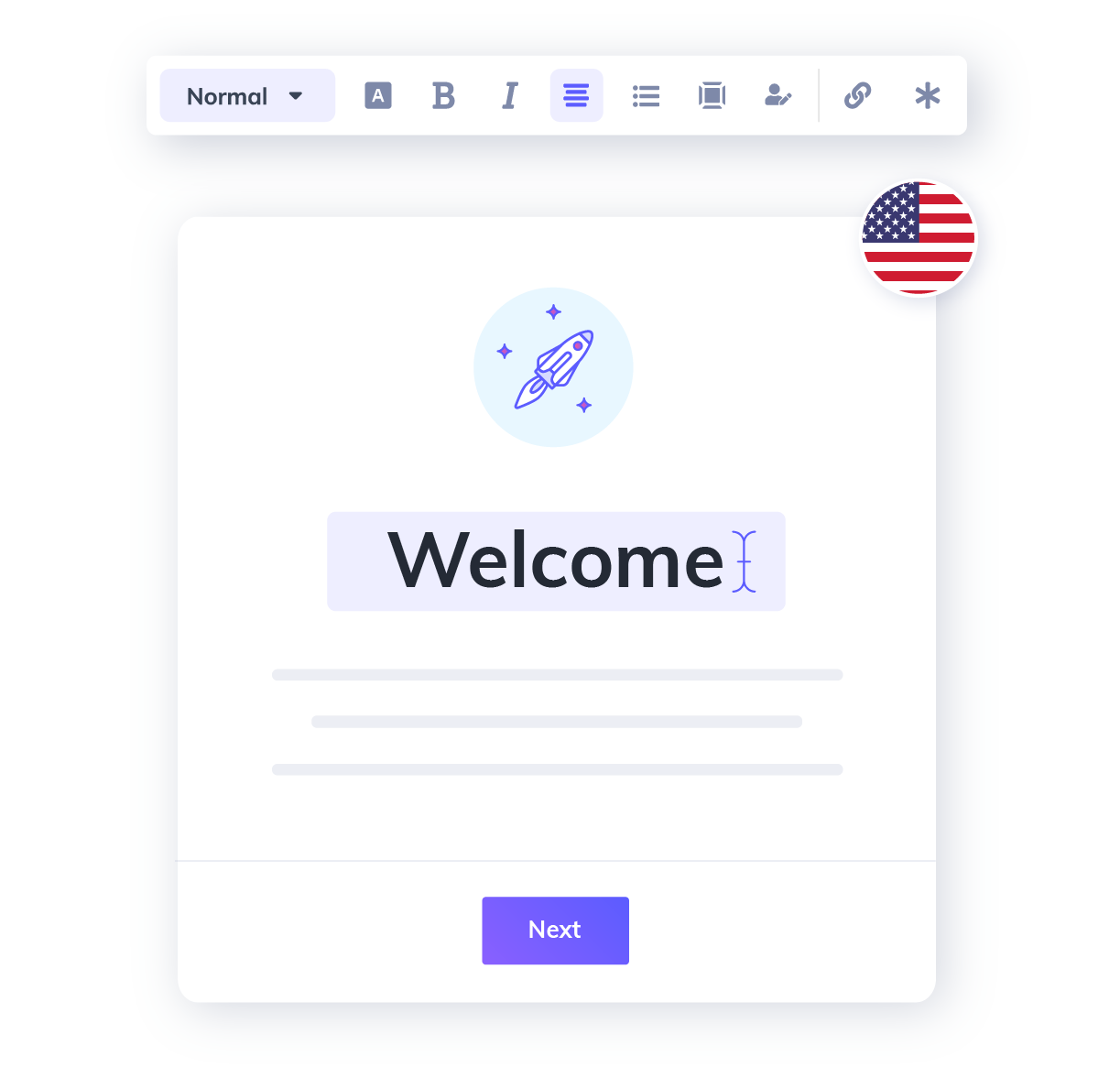Speak your users' language with Appcues Localization

.png)

.png)
There are 7,117 languages spoken in the world today. Some are spoken by billions, others are shared by just handfuls of people.
How many languages does your product speak?
If the answer is “one,” you’re not alone. “There is a longstanding assumption that enough people on the web feel comfortable using English, especially when buying high-tech or expensive products,” says Common Sense Advisory founder Don DePalma.
But research shows that—even when they are comfortable with English as a second language—most people prefer speaking, reading, and making purchasing decisions in their native language. In fact, the demand for non-English digital content is increasing: In 2014, a full 75% of consumers surveyed said they prefer to buy products in their native language, up from 72% in 2006. And a whopping 90% of online shoppers choose their native language when it’s available.
Statistics like these are part of why smart software companies invest in localization.
In software, localization (sometimes written as “l10n”) refers to the adaption of a product, app, or website to meet the needs and preferences of a specific locale or market.
These needs can be visual, cultural, or even legal—but more often than not, the process of localization focuses on translating written or spoken content into a target market’s local language.
Localization should not be confused with internalization, which is in fact a prerequisite for former. More precisely, internalization refers to the development of a product that can then be easily adapted to different locales.
Appcues makes it easy to onboard, educate, and support your users in their native language—whether that’s Spanish, Mandarin, Bengali, Igbo, or Ancient Greek (you never know).
With Appcues Localization, you can create a single flow, export the content to be translated in-house or using a third-party translation service, import the translated content for as many languages as you want to support, and then publish in one go—for web and native mobile apps!
Becoming fluent in another language is hard. Localizing your in-app experiences shouldn’t be. Appcues Localization makes it simple:
1. Build in-app content in your native language
Create and target your new user onboarding, product tours, or feature announcements.

2. Export that content for translation
Export that content as a CSV or JSON file for translation by your in-house team or a third party service.

3. Upload translated content and publish
Once you’ve uploaded your translations to Appcues, just hit publish. By default, we’ll target based on a user’s browser language—but you can use any user attribute you’d like.

(Note that at the moment, Appcues only supports text localization. If you want to show different images to users in different countries or localize non-text elements, you’ll need to create and target your flows using the old workflow.)
Localization is important for many reasons, 2 of the principle ones being that it:
As we covered above, most people prefer shopping, browsing, and reading in their native language. And since just under 5% of the world’s population speaks English as a first language, that means—if you’re not providing localized translations of your most important in-app content—you’re delivering a sub-optimal experience for 95% of the potential global market.
Looked at another way, 26% of the world’s internet users speak English as of March 2020, which means 74% of internet users either need or prefer experiences in a language other than English.
What’s more, non-native English markets dominate both the iOS and Google Play charts for mobile app downloads—7 out of 10 of the top iOS markets and 9 out of 10 of the top Google Play markets are in non-native English-speaking countries. When it comes to internet user distribution, over half of the world’s users are located in Asia. Next is Europe, home to 16% of the world’s internet users, followed by Africa (11.5%), and Latin America/Caribbean (10.1%)—all regions with sizable non-English markets.
If you’re looking to expand internationally, localization is a no-brainer.
Even if global expansion isn’t a priority for your company right now, you may be surprised how many of your current customers would appreciate (and stick around for) a more localized experience.
For example, we don’t actively market in France or Japan or Brazil or Egypt—but non-US companies make up over 37% of our customer base.
When we dug into our own user data, we found that although over 91% of Appcues customers are located in countries with high English proficiency rates, 14% of Appcues end users prefer to consume content in a language other than English.
When we look at the data by country, this preference becomes even clearer. For instance, in the Netherlands—which has the highest English proficiency rate of any non-English country—over 55% of end users choose to browse in their native Dutch.
It’s worth asking yourself how many of your existing user and customer relationships could be improved by speaking their language.
Localized experiences are personalized experiences. Personalized experiences are better experiences. Better experiences are good for business.
Head over to Appcues.com/localization for more information or to schedule a chat with one of our Localization specialists.
